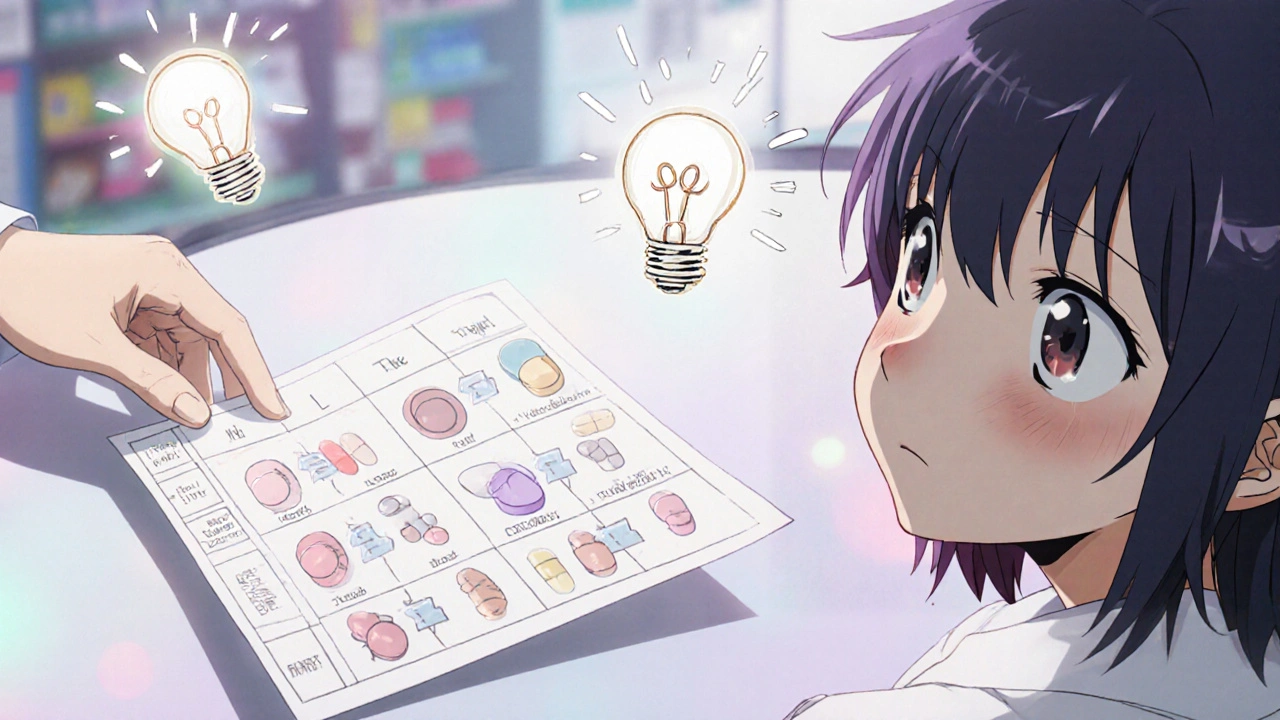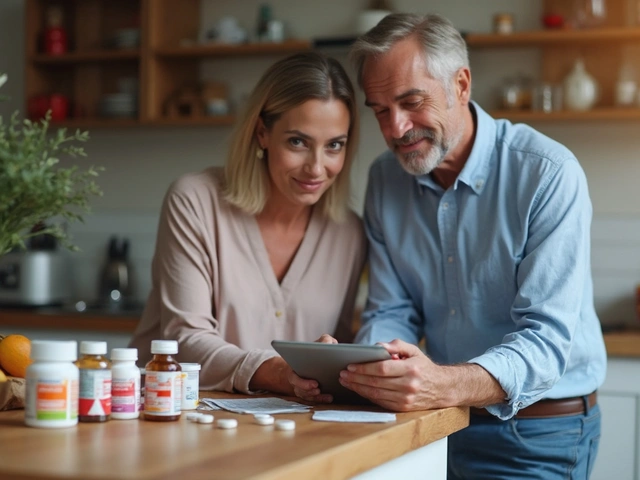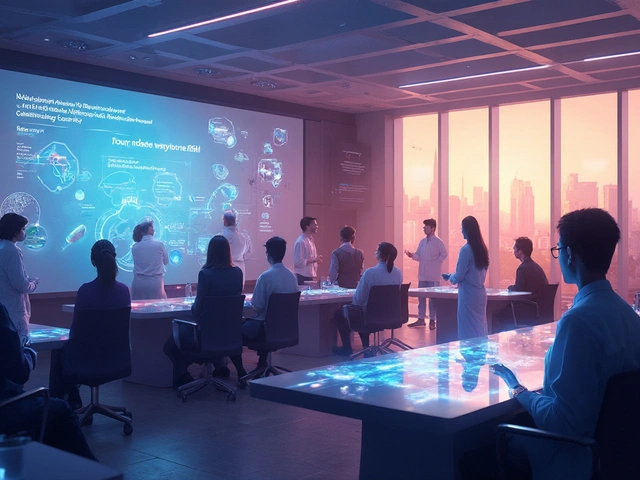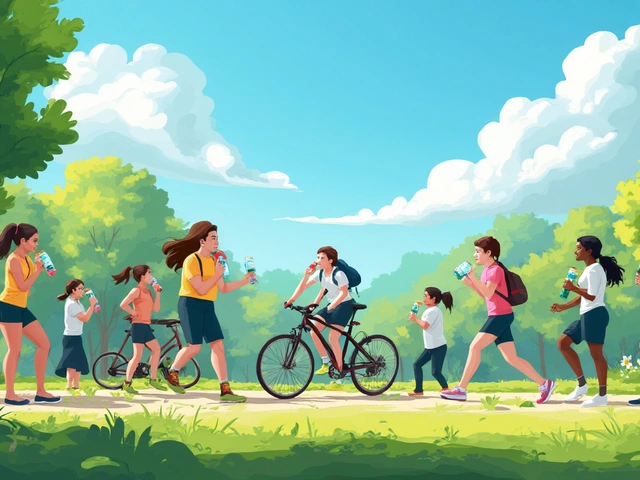When a patient picks up their prescription and sees a pill that looks completely different from what they’re used to, their first thought isn’t usually cost savings-it’s, “Is this even the same drug?”
That hesitation is real. Nearly 1 in 4 patients express concern about generic medications, according to a 2021 study in the Journal of the American Pharmacists Association. And it’s not just about price. Many believe generics contain less active ingredient, worry they’re made in inferior factories, or think switching brands could make their condition worse. These aren’t irrational fears-they’re misunderstandings shaped by years of marketing, appearance changes, and poor communication.
Why Patients Doubt Generics (And Why It Matters)
It’s easy to assume patients are just being difficult. But the truth is, they’re reacting to real gaps in information. A 2019 University of Michigan study found that 78% of patients focus on pill appearance-color, shape, size-as the main reason they distrust a generic. One Reddit user described it plainly: “My blue oval pill became a white rectangle. I thought I was getting a different medicine.”
Then there’s the myth that generics are only 80% as effective. That’s not true. The FDA requires generics to deliver between 80% and 125% of the brand-name drug’s active ingredient in the bloodstream-meaning they’re bioequivalent. But only 32% of patients know that, according to 2022 data from the National Community Pharmacists Association.
And when cost is the only reason given for switching, it backfires. A 2021 JAMA Internal Medicine study showed that saying, “It’s cheaper,” actually decreased trust by 22%. Patients start wondering: If it’s so good, why is it so cheap?
This isn’t just about comfort-it’s about safety. A case documented in a Medscape forum told of a patient who stopped taking warfarin after receiving a generic without explanation. They later ended up hospitalized with a blood clot. That’s the cost of silence.
The Right Way to Talk About Generics: The Ask-Tell-Ask Method
Simply saying, “This is the same thing,” doesn’t work. Patients need to feel heard, not corrected.
The most effective approach, backed by a 2020 Journal of General Internal Medicine study of over 1,200 patients, is the Ask-Tell-Ask method:
- Ask: “What are your thoughts about switching to this generic version?”
- Tell: “This medication has the same active ingredient as your brand-name pill. The FDA requires it to work the same way in your body-within a very tight range. The only difference is the name on the label and the cost.”
- Ask: “Can you tell me back in your own words what we just discussed?”
This isn’t just a script-it’s a conversation. The “teach-back” step ensures understanding. In a Kaiser Permanente trial, using this method increased generic acceptance from 54% to 81% across 12,000 patients.
And timing matters. The FDA found that 89% of patients accepted generics when the conversation happened at the time of prescribing-not when they picked up the pill. That’s why collaboration between prescribers and pharmacists is so powerful. When both say the same thing, trust grows. Studies show team-based approaches boost acceptance to 85%, compared to 67% when only the pharmacist speaks up.
What to Say (And What Not to Say)
Words matter more than you think.
Here’s what works:
- “I prescribe this generic for my own family.” - This personal endorsement increased acceptance by 37 percentage points, according to the American Journal of Managed Care.
- “This medication has exactly the same active ingredient, but without the brand-name marketing costs.” - This phrasing increased acceptance by 29%.
- “Because you said taking several pills a day is hard, this generic lets you take the same dose in one pill.” - Linking the switch to the patient’s personal goal, as shown in research from the Institute for Safe Medication Practices, boosted adherence by 41%.
And here’s what doesn’t:
- “It’s the same drug, just cheaper.” - Too blunt. Triggers suspicion.
- “Don’t worry, it’s FDA-approved.” - Too technical. Patients don’t know what that means.
- “Everyone takes generics.” - Makes patients feel judged.
The most successful pharmacists don’t just give facts-they build trust. As Dr. Jane Smith, former president of the American College of Clinical Pharmacy, said: “Patients need a personal endorsement, not just facts-they’re inundated with conflicting health information online.”

Visual Tools That Work
When words aren’t enough, visuals help.
A 2022 Healthcare Hotline survey found that 68% of patients would accept a generic if they could see a side-by-side comparison of the pill they were used to and the new one. The FDA’s new “Generics Smart” digital toolkit includes 3D pill models and videos showing how bioequivalence testing works. In a pilot at 15 CVS pharmacies, these tools increased acceptance by 29%.
Even simple printed images-before-and-after photos of pills with labels-can reduce anxiety. Pharmacists can keep a small binder or tablet with common switches ready to show patients. No need for fancy tech. Just clear, honest visuals.
Overcoming Common Objections
Here are the top 5 objections-and how to respond:
- “It didn’t work for me last time.” - “Can you tell me what happened? Sometimes the change in size or coating affects how fast the pill dissolves. Let’s check if we can match the timing or try a different generic brand.”
- “I’ve been on this brand for years.” - “That’s completely understandable. Many people feel that way. But the active ingredient hasn’t changed. The only difference is the name on the bottle.”
- “I don’t trust generics made overseas.” - “The FDA inspects every generic manufacturing facility-whether it’s in the U.S., India, or Germany. They follow the same standards as brand-name plants. In fact, many brand-name pills are made in the same factories.”
- “It looks different.” - “You’re right, it does. That’s because the law doesn’t let generic makers copy the exact shape or color of brand-name pills. But the medicine inside? Identical. Here’s a picture showing how they’re tested to make sure.”
- “My doctor didn’t say anything about this.” - “Your doctor approved this switch because it’s safe and effective. We’re just helping you understand why it’s the same medicine, just without the brand name.”
Training matters. The American College of Clinical Pharmacy recommends 4-6 hours of role-playing to help providers overcome reflexive dismissiveness. You can’t just memorize lines-you need to practice handling real emotional reactions.

Why This Is More Than Just a Prescription
Generics make up 90.9% of all prescriptions dispensed in the U.S., yet they cost only 22.9% of total drug spending. That’s $313 billion saved every year. But when patients refuse generics because they don’t trust them, the system loses. The Generic Pharmaceutical Association estimates $8.2 billion is wasted annually on unnecessary brand-name prescriptions.
And it’s not just about money. It’s about access. For patients on fixed incomes, a $50 generic instead of a $300 brand can mean the difference between taking their medicine-or skipping doses.
Starting in 2024, Medicare Part D Star Ratings now include “generic substitution acceptance rate” as a quality metric. Pharmacies and providers are being measured on how well they communicate-not just how many generics they dispense.
Demographics matter too. Patients over 65 are nearly twice as likely to hesitate as younger adults. Rural patients are more skeptical than urban ones. These aren’t one-size-fits-all conversations. They require patience, cultural awareness, and time.
But here’s the good news: you don’t need more staff. You don’t need new technology. You just need to change how you talk.
What You Can Do Today
You don’t have to wait for training programs or funding. Start small:
- Keep a printed comparison sheet of common brand-to-generic switches on your counter.
- Use the Ask-Tell-Ask method with every patient who gets a generic.
- Say one personal endorsement: “I give this to my mom.”
- Ask patients to explain back what they heard.
- Document every conversation-even a simple note like “Patient understood bioequivalence. No concerns.”
These aren’t extra tasks. They’re part of good pharmacy practice. The goal isn’t to sell generics-it’s to ensure patients get the right medicine, consistently, safely, and without fear.
When patients trust their pharmacist, they take their meds. And when they take their meds, they stay healthy. That’s the real win.
Why do patients think generics are less effective?
Patients often believe generics are weaker because of misleading marketing, changes in pill appearance, or hearing rumors online. Many think the FDA allows generics to contain only 80% of the active ingredient, but that’s false. The actual requirement is 80-125% bioequivalence, meaning the medicine works the same way in the body. The difference is only in non-active ingredients like color, shape, or filler-none of which affect how the drug works.
Is it safe to switch from a brand-name drug to a generic?
Yes, it’s not only safe-it’s scientifically proven. The FDA requires every generic to meet the same strict standards for quality, strength, purity, and performance as the brand-name version. Generics must be bioequivalent, meaning they deliver the same amount of active ingredient into the bloodstream at the same rate. Millions of patients switch safely every day. The only exceptions are narrow-therapeutic-index drugs like warfarin or levothyroxine, where close monitoring is needed-but even then, switching is still safe with proper follow-up.
How long should a pharmacist spend talking about generics?
The American College of Clinical Pharmacy recommends spending 3-5 minutes per patient to address concerns properly. That’s enough time to ask about their worries, explain bioequivalence, show a pill comparison, and confirm understanding. While time is tight, even a 2-minute focused conversation using the Ask-Tell-Ask method can significantly increase acceptance. Skipping this step leads to non-adherence, which costs more in the long run.
Can pharmacists really make a difference in patient acceptance?
Absolutely. Research shows pharmacists who proactively explain generics before the patient even asks achieve 82% acceptance rates-far higher than those who wait for complaints. When pharmacists use personal endorsements like “I give this to my family,” acceptance jumps by 37%. Patients trust their pharmacist more than any other healthcare provider for medication questions. That trust is your greatest tool.
What if a patient refuses a generic even after I explain it?
Respect their decision, but don’t give up. Document their concern and offer to contact their prescriber to discuss alternatives. Sometimes, a different generic brand (made by a different manufacturer) may look or feel more familiar. Other times, the patient may need a short trial period with close follow-up. The goal isn’t to force a switch-it’s to support informed choices. Keep the door open. Many patients change their minds after seeing the same medication work well over time.
Are there tools or resources I can use to help explain generics?
Yes. The FDA’s “Generics Smart” toolkit includes printable pill comparison images, short videos showing bioequivalence testing, and digital 3D models of generic and brand-name pills. The American College of Clinical Pharmacy also offers free counseling guides and role-play scenarios. Even simple printed handouts with before-and-after photos of common pills can reduce anxiety. You don’t need expensive tech-just clear, visual, honest explanations.
Next steps: Start by picking one patient each day to use the Ask-Tell-Ask method. Note their response. After a week, you’ll see a shift-not just in acceptance rates, but in how patients talk to you. Trust grows when you listen first, explain clearly, and treat their concerns as valid-not wrong.






I never realized how much pill appearance affects trust until my grandma refused her generic blood pressure med because it was round instead of oval. She swore it was a different drug. Took us weeks to convince her it was the same. The Ask-Tell-Ask method sounds like something we should’ve done from the start.